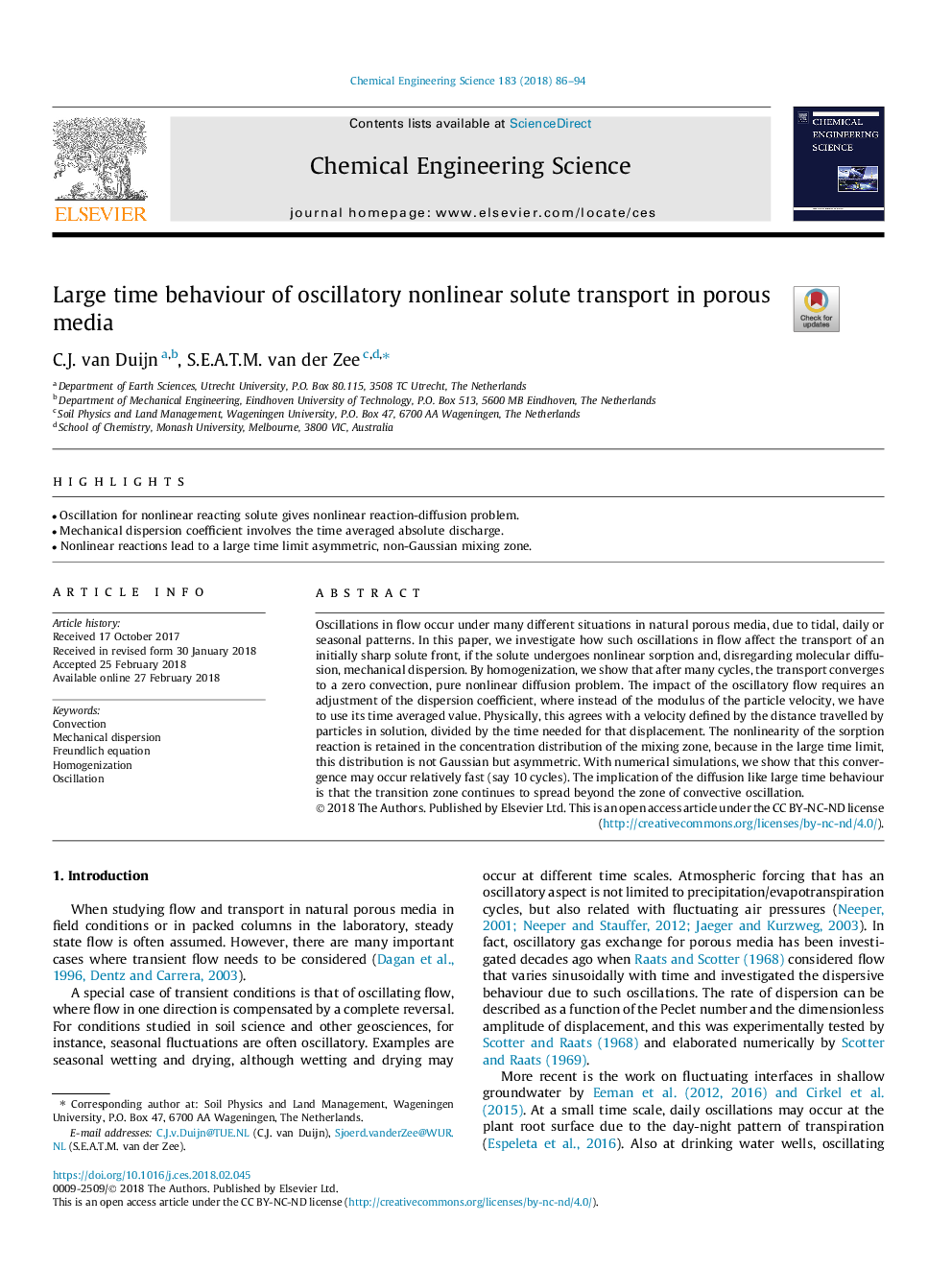| Article ID | Journal | Published Year | Pages | File Type |
|---|---|---|---|---|
| 6588548 | Chemical Engineering Science | 2018 | 9 Pages |
Abstract
Oscillations in flow occur under many different situations in natural porous media, due to tidal, daily or seasonal patterns. In this paper, we investigate how such oscillations in flow affect the transport of an initially sharp solute front, if the solute undergoes nonlinear sorption and, disregarding molecular diffusion, mechanical dispersion. By homogenization, we show that after many cycles, the transport converges to a zero convection, pure nonlinear diffusion problem. The impact of the oscillatory flow requires an adjustment of the dispersion coefficient, where instead of the modulus of the particle velocity, we have to use its time averaged value. Physically, this agrees with a velocity defined by the distance travelled by particles in solution, divided by the time needed for that displacement. The nonlinearity of the sorption reaction is retained in the concentration distribution of the mixing zone, because in the large time limit, this distribution is not Gaussian but asymmetric. With numerical simulations, we show that this convergence may occur relatively fast (say 10 cycles). The implication of the diffusion like large time behaviour is that the transition zone continues to spread beyond the zone of convective oscillation.
Related Topics
Physical Sciences and Engineering
Chemical Engineering
Chemical Engineering (General)
Authors
C.J. van Duijn, S.E.A.T.M. van der Zee,
